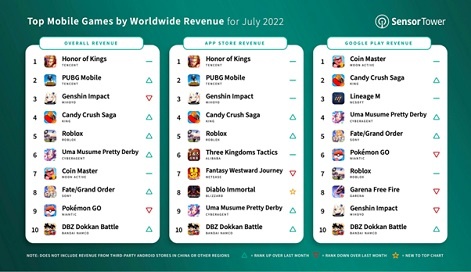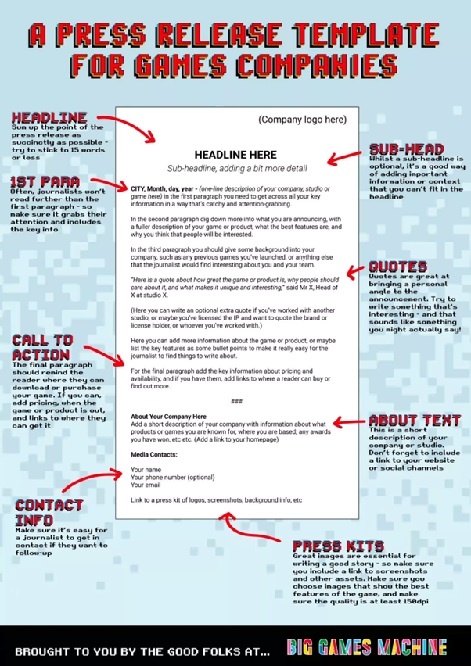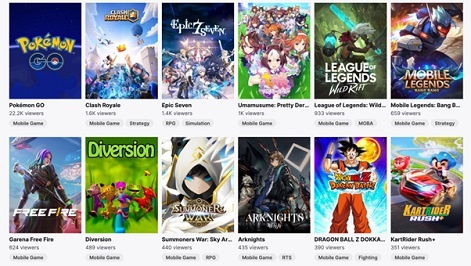As the gaming market grows increasingly competitive, it can be a struggle to compete with games with a higher budget and larger market reach. Mobile markets may be more welcoming to independent developers, however, the market is dominated by a relatively small number of large developers and legacy titles, which can make it hard for independent developers to make a name for themselves.
In this guest post, Big Games Machine co-founder James Kaye discusses the steps that mobile developers can take to stand out from the crowd and grow their businesses.
As a sector that makes up more than half of global gaming revenue, the mobile market is absolutely flourishing right now. Alongside the big earners such as PUBG: Mobile, Pokémon GO and Genshin Impact, we’ve got lesser-known titles such as Lonewolf, Bloody Bastards, and Cricket Through the Ages demonstrating the range of games that are out there. And in the last few years, AAA publishers have been pushing more money into mobile than ever as they adapt well-known franchises including Harry Potter, Avatar, Star Wars, and Lord of the Rings into ports and spin-off titles, many of which are in soft-launch now.

Sensor Tower - Top Mobile Games by Worldwide Revenue for July 2022
While all of this is excellent news for gamers, the sheer volume of new games entering the market every single day and the market dominance of the most popular titles can make promoting new releases, particularly smaller ones, pretty tricky. And with the exception of specialist mobile publications like PocketGamer.biz, most video game publications don’t have dedicated mobile editors or reporters, with mobile games rarely getting a look-in outside the big names that have SEO value.
This is a shame because there are plenty of superb mobile games out there worth shouting about, and I’m sure there are even more currently flying under the radar. Unfortunately, there’s not much I can do to change the wider media landscape, but what I can do is share some advice that I’ve picked up from the 20+ years I’ve worked with mobile games in the hope that it will be useful to not only small mobile teams and independent developers, but anyone on the PR and marketing teams for mobile games.
Finding the right audience for your mobile game
To market your game correctly and ensure it ends up in the hands of the right people, you need to know who you’re targeting and the best ways of communicating with them. Finding the right audience for your game is important because it will shape which media publications and influencers you engage with and how you engage with them.
So, where do you start? The makeup of the mobile market is incredibly diverse, spanning everything from Match3, endless runners, and 4X strategy games to first-person shooters and full-blown adventure RPGs. This means you’ve got diverse audiences, too. Garena Free Fire and PUBG: Mobile are hits with younger players, especially in Southeast Asia, where mobile gaming is more accessible than PC and console, while casual games such as Candy Crush Saga, Clash of Clans, and Coin Master dominate the charts in most regions.

GameRefinery - Player Motivations for Candy Crush Saga and Match3 Puzzle games
The audience you target with your game will largely depend on your game’s genre. A casual game will have a broader range of players than something more niche such as a 4X strategy game, but the elephant in the room here is that there’s usually little media interest in casual or hypercasual games unless they go viral or have SEO value. Most media outlets prefer mid to hardcore mobile titles because there’s more to talk about, and a more defined audience looking for that content.
Another important thing to be aware of is the varying player motivations of specific audiences. For example, RPG players enjoy games with resource management skill-based mechanics, while puzzler players enjoy gameplay mechanics that involve thinking and solving problems with the ability to complete milestones and express themselves through customisation. Some platforms, such as GameRefinery, can help you track this.
Approaching the media and knowing how to find the right journalists
Once you’ve got a better idea of your target audience, you’ll be able to work out which media publications you should target and how to position your game. This is where you’ll start building your media list full of contacts. Plenty of specialist gaming publications focus on specific genres, such as RPGsite and retroGamer, so don’t be afraid to hit these up and do some research if your game hones in on a particular genre.
Mobile media is much smaller than it used to be, but at the same time, it can also focus on particular genres and topics. Just like there are specialist gaming websites that only cover Nintendo, PlayStation or Xbox games, the same is true for mobile, with specialist websites for iOS and Android specifically. Make sure you research the specific publications you’re planning on targeting to make sure they cover mobile games and your platform.
As for finding the right journalists, I’ve already mentioned that some of the more prominent gaming publications rarely cover mobile games and, in some cases, don’t cover mobile games at all. Media outreach can take up a lot of time, and you don’t want to waste your valuable time by contacting journalists who are not interested in covering your game in the first place. All of that said, there has been a concentrated effort from some big gaming websites to expand their mobile coverage. One example is Swipe, GameSpot’s recently launched, and first-ever, mobile game show.
I cannot overstate the importance of research here, as doing it properly will save you time and a lot of headaches in the future. Make sure you check to see if there’s a dedicated mobile reporter at the publications you’re targeting, and in the cases that you find more than one person covering mobile games, target the person that’s covered games that are similar to yours – or at least the same genre – in the past.
If you’ve got the time, we’d recommend contacting journalists individually rather than doing a mass mail-out. This allows you to tailor your approach to the journalists you’re contacting to mention specific details they might be interested in. You can find contact information for most journalists on websites, social media platforms such as Twitter, or platforms such as Rocket Reach.
What information to include about your game and best practice for working with journalists

Giving media access to your game is important but, unfortunately, isn’t as simple as sending out a Steam key or digital code for console and PC games. However, you may be able to (and absolutely should) do this if you’re working on a paid-for mobile game – as long as it’s not focussed on multiplayer.
In most cases, you’ll likely have a freemium game already in soft-launch. If this is the case, make sure your initial outreach email includes player data (if it’s worth mentioning) and what the reception has been from players who have experienced your game so far.
All of the key information about your game should be wrapped up neatly in a press release. There are hundreds of different ways you can write and format a press release and we’ve written about this extensively on the Big Games Machine website here. But as a quick note, a release for your game should always include:
● Key information such as release dates, platform, price, developer and publisher
● Key features and gameplay mechanics
● A press/media kit including visual assets (screenshots, gameplay footage, studio info)
● Call to action and contact information
Make sure you give journalists access to everything they need in your first outreach email, and embed this into your email where possible or provide links rather than smashing their inbox with loads of attachments. Journalists are time-strapped, given there are so many games to cover, and it doesn’t look great if they have to chase you for the information you could have provided them in the first place.
If you’re working on a premium game, don’t be afraid to ask journalists if you can run a giveaway competition. And if your game is a freemium title, you should consider giving away items and bonuses to help them progress through the game quicker to experience the later stages.
Working with influencers – do mobile influencers exist?

The most popular games on Twitch in August.
Unfortunately, mobile influencers are somewhat of a rarity, and most games streamed on platforms such as Twitch are usually AAA titles that are already hugely popular. That said, quirky titles that offer gamers an experience unlike anything that already exists on the market can sometimes cut through the noise and catch the attention of influencers and streamers enough to create some content for.
So does this mean you should completely rule out influencers and streamers of your marketing and PR strategy? Not exactly. Again, this is where research is key. While you’re unlikely to hear back from the biggest names, you should consider contacting smaller influencers that have covered mobile games before, especially if they’re in the same genre as yours. Pay attention to how they covered these however - you may find that it’s because the content was sponsored, and that’s the only time they will cover mobile games!
And if you’re working on a game that’s a bit ‘out there’ or just straight-up ridiculous, don’t be afraid to own this in your outreach to influencers and content creators. Many videos on YouTube focus on funny mobile games, alongside loads of ‘best-of’ and ‘top new mobile games of the month’. In most cases, you can find contact information for content creators by heading to their YouTube channel and checking out their ‘About’ section.
Similar to contacting journalists, you may want to offer influencers and content creators the opportunity to do giveaways by giving them codes or free in-game items. Alternatively, if you’ve got the budget available you can always reach out to influencers and see if they’re interested in doing sponsored content.
Strategy goals and other top tips
Don’t be disheartened if you struggle to get your game media coverage. The mobile market is incredibly competitive, you’re limited in terms of the number of publications you can contact in comparison to console/PC games, and mobile game coverage doesn’t carry the same SEO value as reviews for popular console/PC games – all of which can make getting coverage difficult.
One important thing to note is that PR and marketing is a long game. Building relationships with journalists, influencers and content creators takes time, and just because they haven’t covered the first game you’ve reached out about doesn’t mean you won’t have luck next time.
Make sure you keep track of who’s reporting on your mobile game through a trusty spreadsheet or a paid media platform such as Cision or Vuelio, which can send you alerts whenever your game is mentioned or gets coverage. Although these platforms are great, they’re also expensive, so you can always save money by setting up Google Alerts for the name of your mobile game and keeping track of social mentions through social media monitoring tools.
Some key takeaways to help you on your marketing and PR journey in the mobile market are:
● Respect the time of journalists, influencers and content creators by giving them all the information they need to cover your game in advance.
● Research. Research. Research. Prove you’ve invested the time into finding the right contacts for your game, rather than blindly sending emails to anyone with a slight interest in mobile games.
● Don’t be afraid to follow up with journalists after a couple of days if you haven’t heard back. They’re a busy bunch and emails can sometimes get missed.
● It’s not the end of the world if you don’t get media coverage. Spend time investing in content strategies on your owned platforms (social and website) to get your game out there.





















